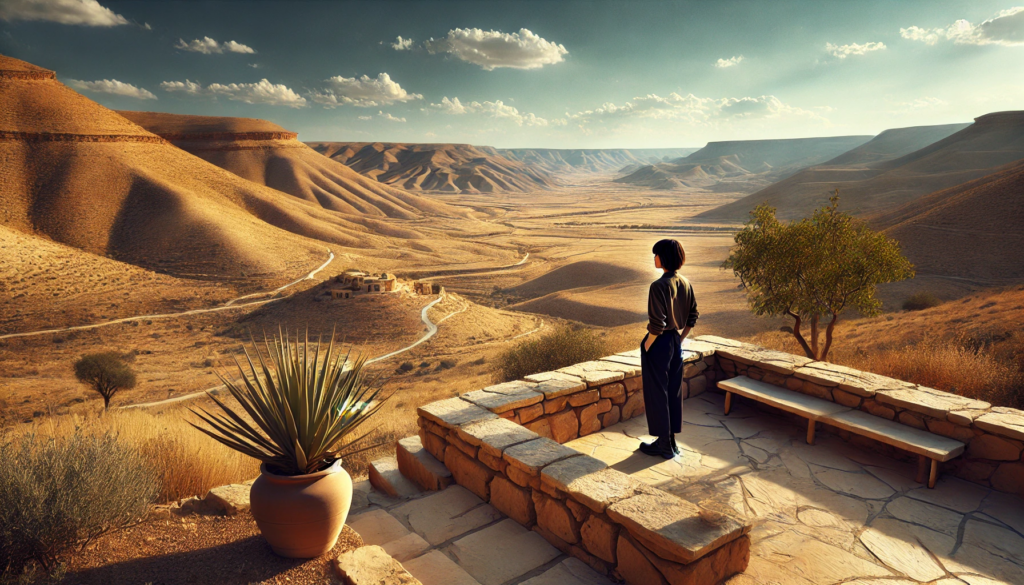ChatGPT:
Mardin, located in southeastern Turkey, is one of the country’s most ancient and culturally rich cities, renowned for its unique architecture, multi-ethnic heritage, and dramatic position overlooking the Mesopotamian plains. The city’s history dates back over 4,000 years, making it a significant historical site with layers of cultural influences from various civilizations, including the Assyrians, Romans, Byzantines, Seljuks, and Ottomans.
Origins and Early History
The name “Mardin” is believed to be derived from the ancient Aramaic word Marda, meaning “fortress.” This origin is fitting, as the city’s earliest settlements were strategically positioned on a rocky hill, offering natural defense against invaders. Mardin’s importance grew as a center along ancient trade routes, including the Silk Road, which linked the civilizations of the East and West. The city’s early inhabitants were likely a mix of Assyrians and other Semitic peoples, followed by the influence of the Persians and later the Romans.
Christian and Islamic Influence
In the early Christian era, Mardin became a prominent center for the Syriac Orthodox Church, hosting important monasteries, churches, and religious schools. This period cemented Mardin’s reputation as a hub of Christian scholarship and learning, particularly within the Assyrian and Armenian Christian communities. Following the Islamic conquest in the 7th century, the city’s religious landscape expanded to include Islamic culture and architectural developments, integrating mosques and madrasas alongside churches and monasteries.
The Artuqid Period
Mardin experienced significant architectural and cultural growth during the Artuqid dynasty, a Turkish Muslim dynasty that ruled parts of Mesopotamia and northern Syria from the 12th to the 15th centuries. The Artuqid rulers transformed Mardin into a vibrant cultural center, commissioning grand structures such as the Great Mosque of Mardin (Ulu Cami) and various palaces and madrasas. This era was marked by a synthesis of Islamic and Christian architectural styles, creating a distinct aesthetic that can still be seen in the city’s sandstone buildings with intricate carvings and facades.
Ottoman Rule and Modern Era
With the Ottoman Empire’s rise, Mardin became part of the empire in the 16th century, further diversifying its population and cultural life. The Ottomans respected the multi-ethnic makeup of Mardin, allowing Christians, Muslims, and Yazidis to coexist within the city. This pluralistic society is evident in the neighborhoods, where churches, mosques, and synagogues stand near one another.
After the foundation of the Turkish Republic in 1923, Mardin’s role as a trade center declined as borders shifted and traditional routes faded. However, the city has recently seen a resurgence of interest due to tourism, as visitors are drawn to its history, architecture, and culture.
Architecture and Cultural Legacy
Today, Mardin is celebrated for its well-preserved architecture. The old city is characterized by its maze-like streets, steep stairways, and stunning sandstone buildings that cascade down the hillside. Many structures are centuries old, with some of the most notable including the Deyrulzafaran Monastery, Zinciriye Medrese, and the 12th-century Sultan Isa Medrese. The city’s architecture is a blend of Assyrian, Arabic, and Ottoman styles, all unified by the use of local yellow limestone.
Preservation and Tourism
Efforts have been made to preserve Mardin’s unique heritage, with many buildings being restored to accommodate the influx of visitors. Tourism has revitalized the local economy, as Mardin has become a popular destination for those seeking a glimpse into Turkey’s diverse cultural history. The city is also famous for its traditional handicrafts, such as silverware and textiles, which showcase local artisanship and cultural motifs.
Mardin remains a fascinating testament to the cultural and religious diversity of the region. Its well-preserved architectural and historical heritage, combined with the breathtaking views of the Mesopotamian plains, make it a remarkable living museum that continues to attract attention from historians, architects, and travelers worldwide.
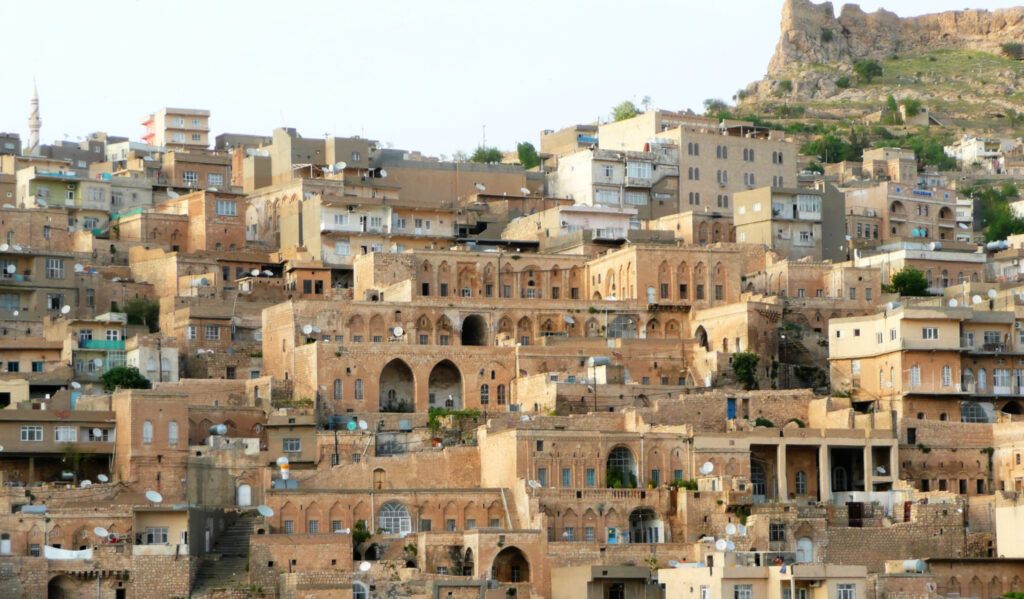
Mardin is home to a variety of historical monuments and tourist attractions that highlight its rich cultural and architectural heritage. Here’s a list of some of the most notable sites:
1. Deyrulzafaran Monastery
• One of the most significant sites in Mardin, this 5th-century Syriac Orthodox monastery is located a few kilometers outside the city. Known as the “Saffron Monastery” due to the yellowish hue of its stone, it has been a spiritual center for the Assyrian Christian community for centuries.
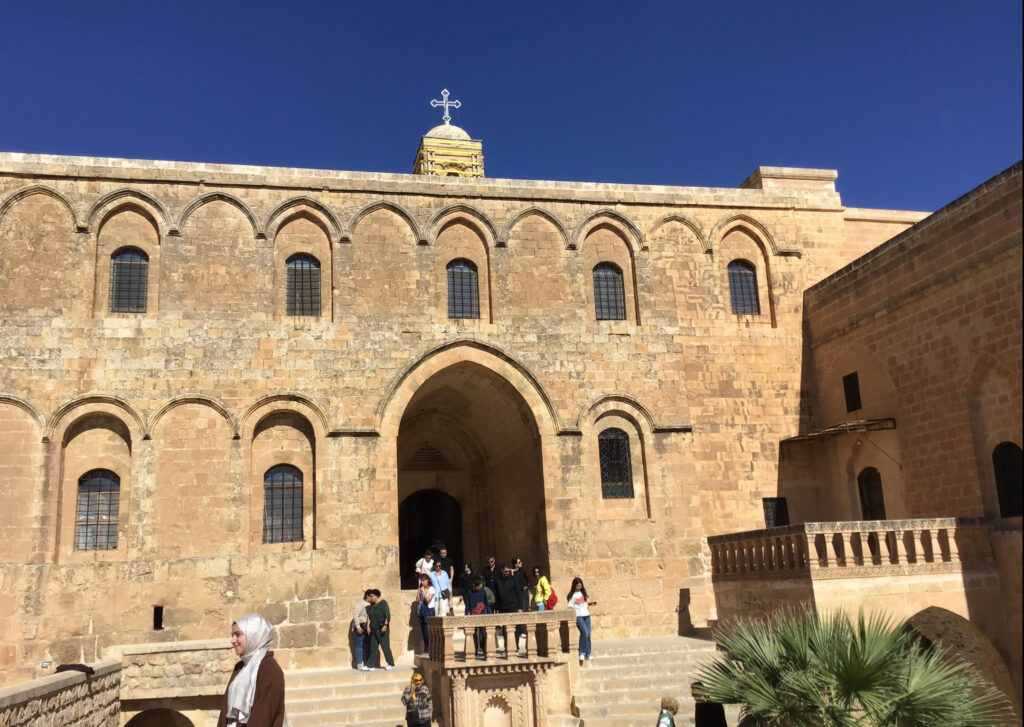
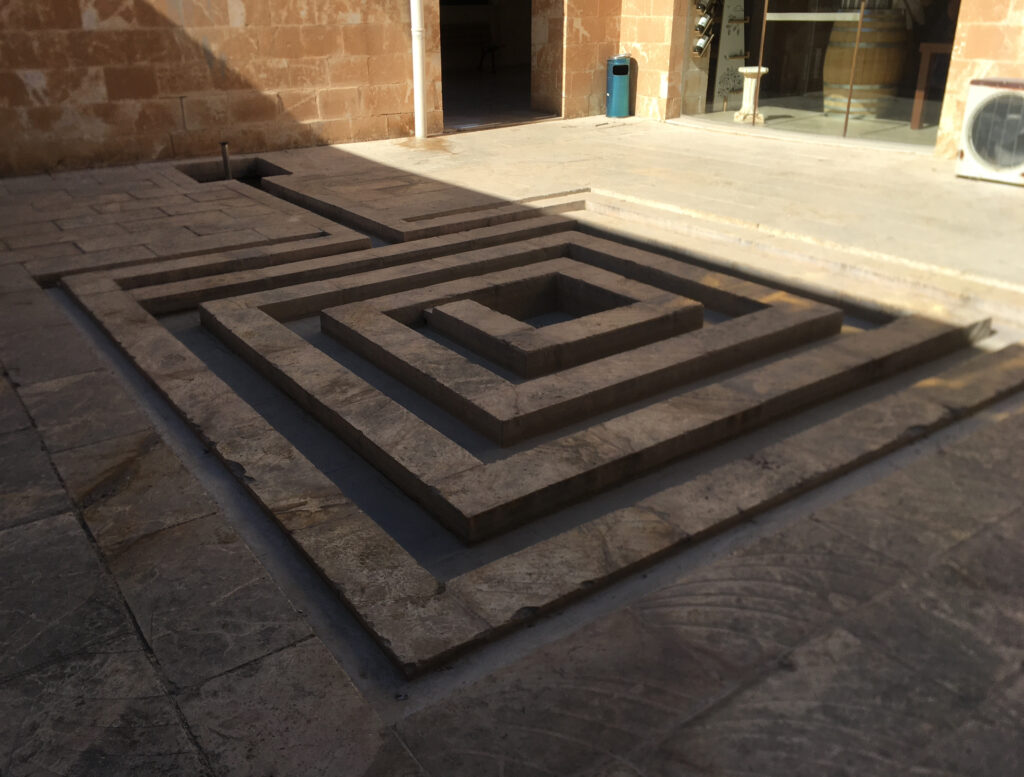
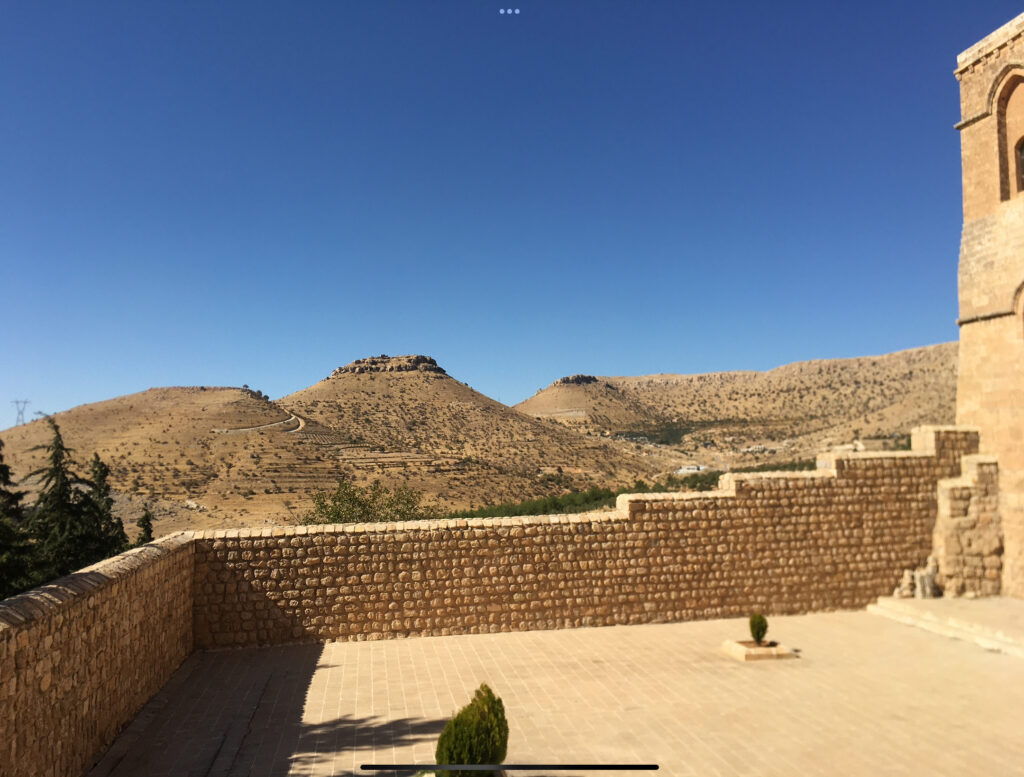
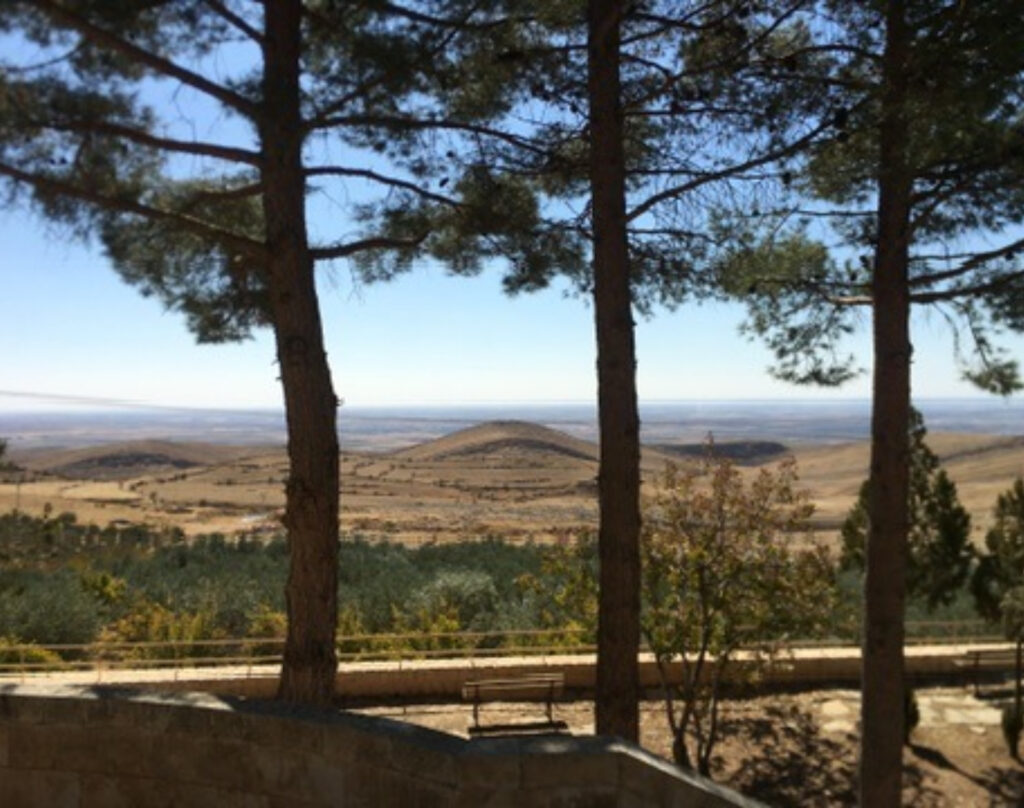
2. Mardin Castle (Eagle’s Nest)
• Perched on a hilltop, this ancient fortress offers panoramic views over the Mesopotamian plains. Though it is currently used by the Turkish military and only accessible with permission, its strategic position and historical significance make it a prominent landmark.
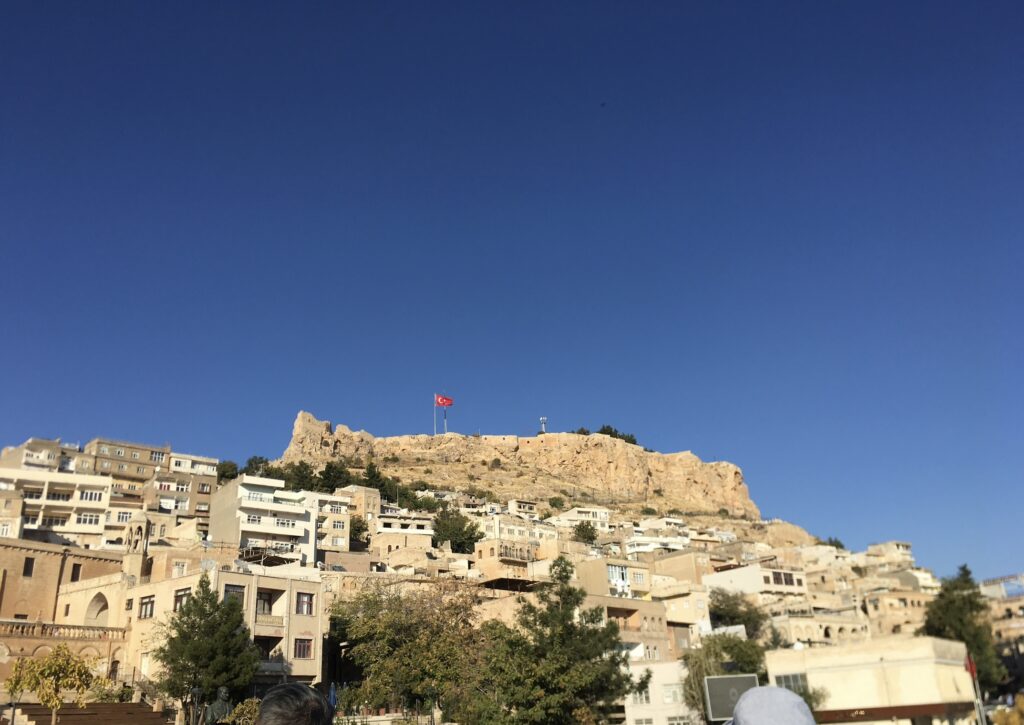
3. Ulu Cami (Great Mosque of Mardin)
• This 12th-century mosque, built during the Artuqid period, is Mardin’s oldest and most important mosque. Known for its single minaret adorned with intricate carvings, it’s a prime example of Artuqid architecture.
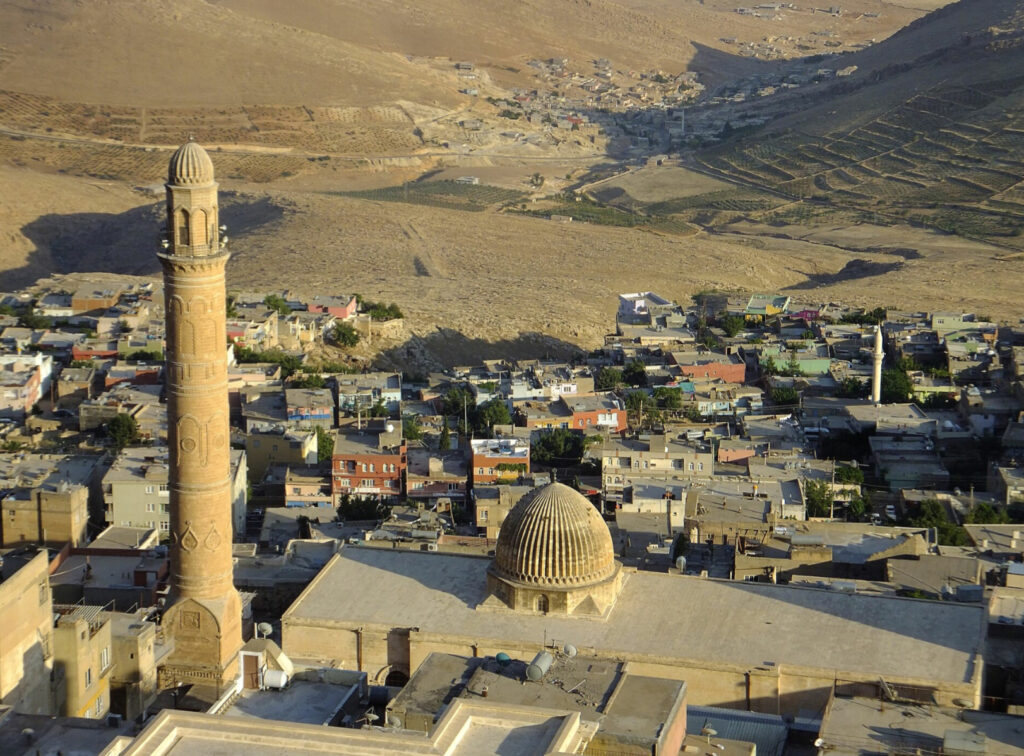
4. Zinciriye Medrese (Sultan Isa Medrese)
• Constructed in the 14th century, this madrasa is one of the city’s architectural gems. It features a beautiful courtyard, domes, and an elaborate portal, with views over the surrounding plains from its terraces.
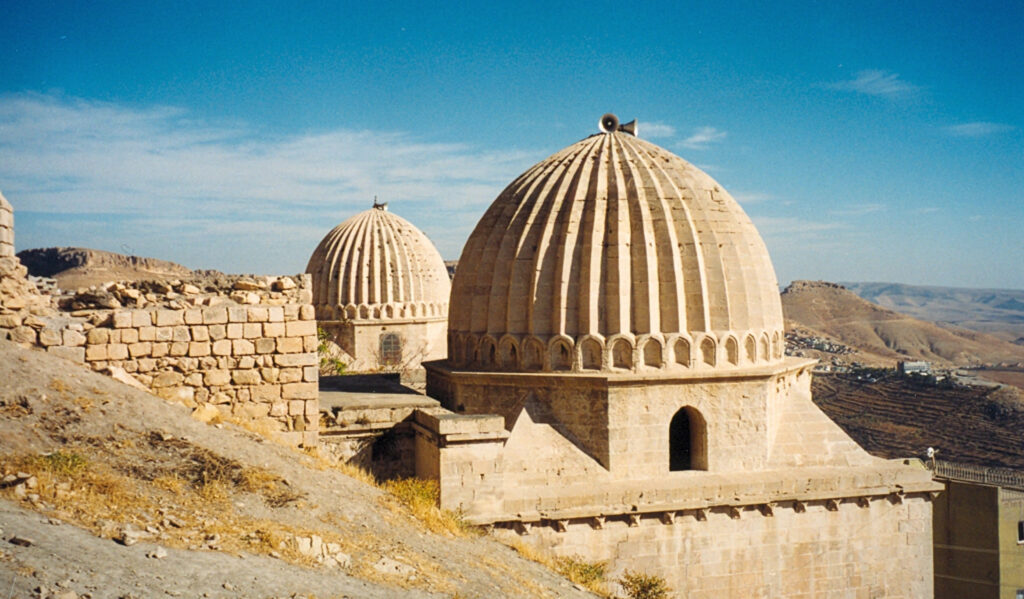
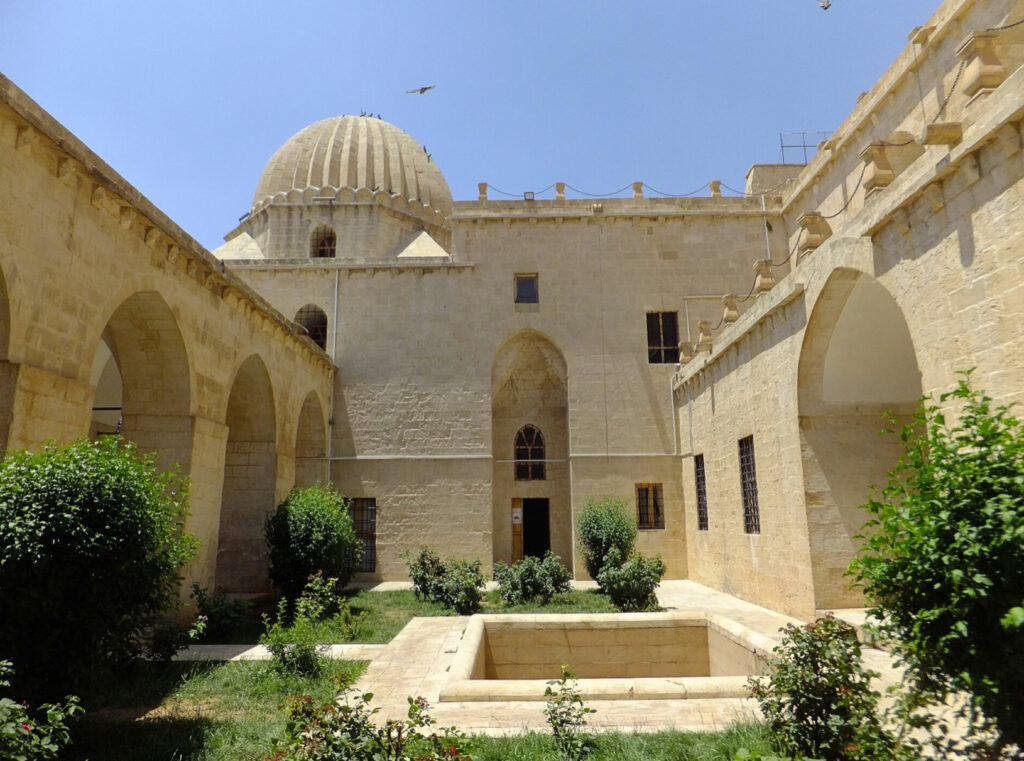
5. Kasimiye Medrese
• Built in the 15th century, this large madrasa complex includes a mosque, a school, and a pool symbolizing the cycle of life. The medrese showcases beautiful stonework and offers a peaceful ambiance, making it a favorite among visitors.
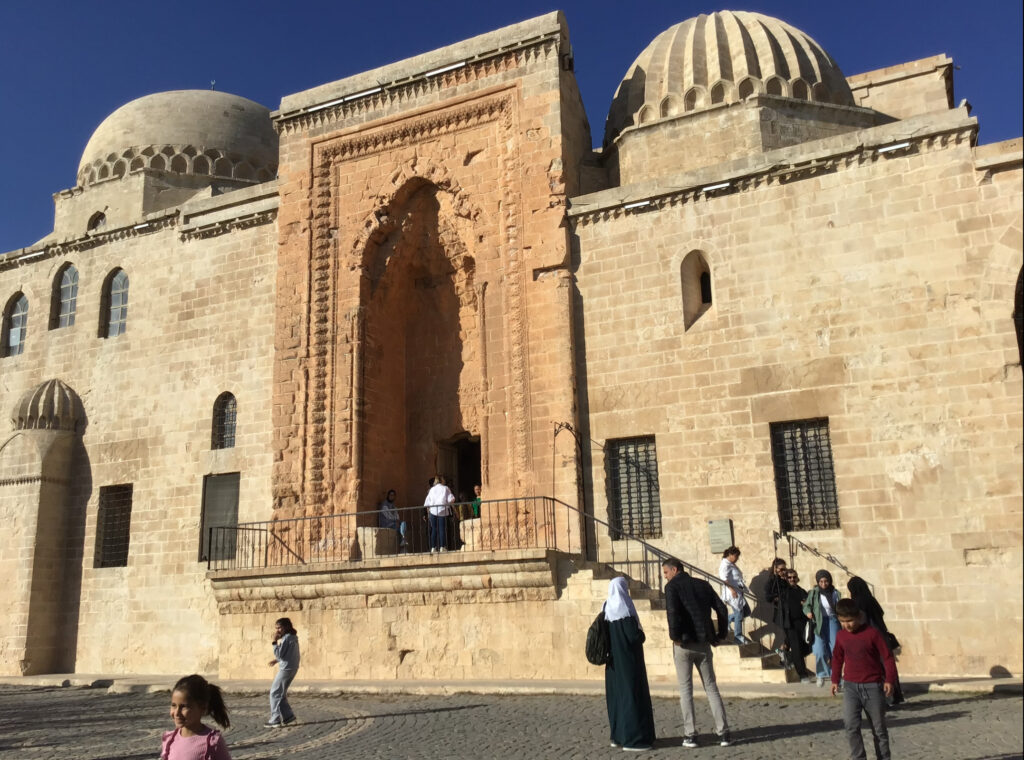
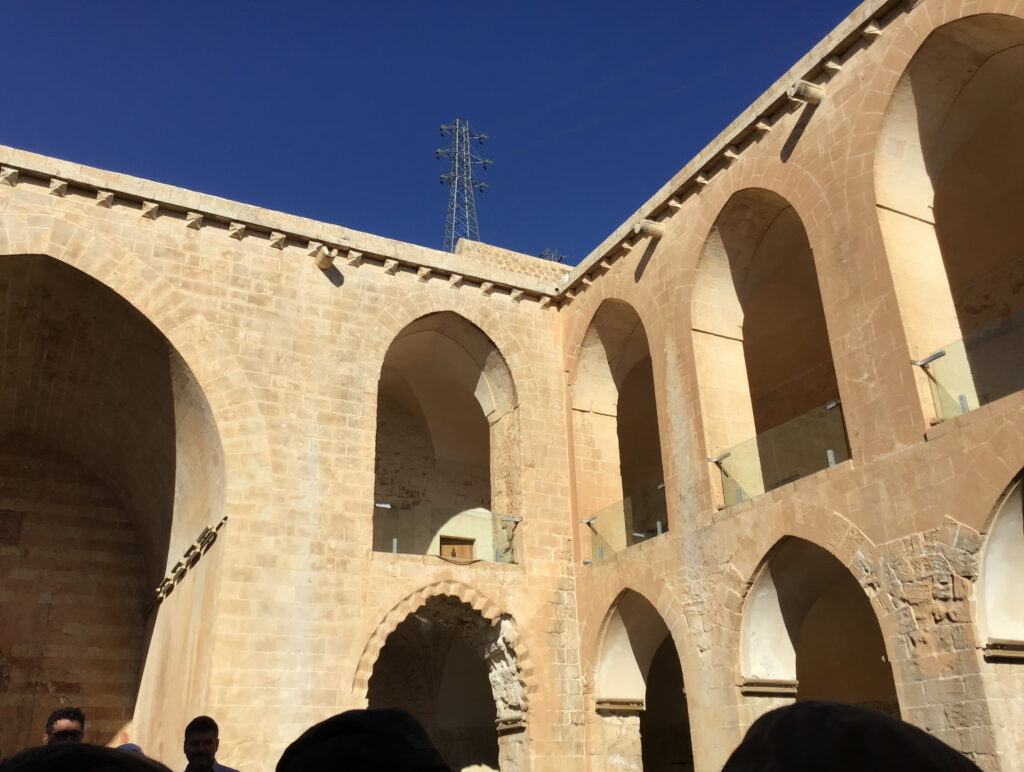
6. Mardin Museum
• Housed in a beautifully restored building from the 19th century, the Mardin Museum displays artifacts from various civilizations, including the Assyrians, Romans, Byzantines, and Ottomans. The exhibits give insight into the city’s multicultural history and heritage.
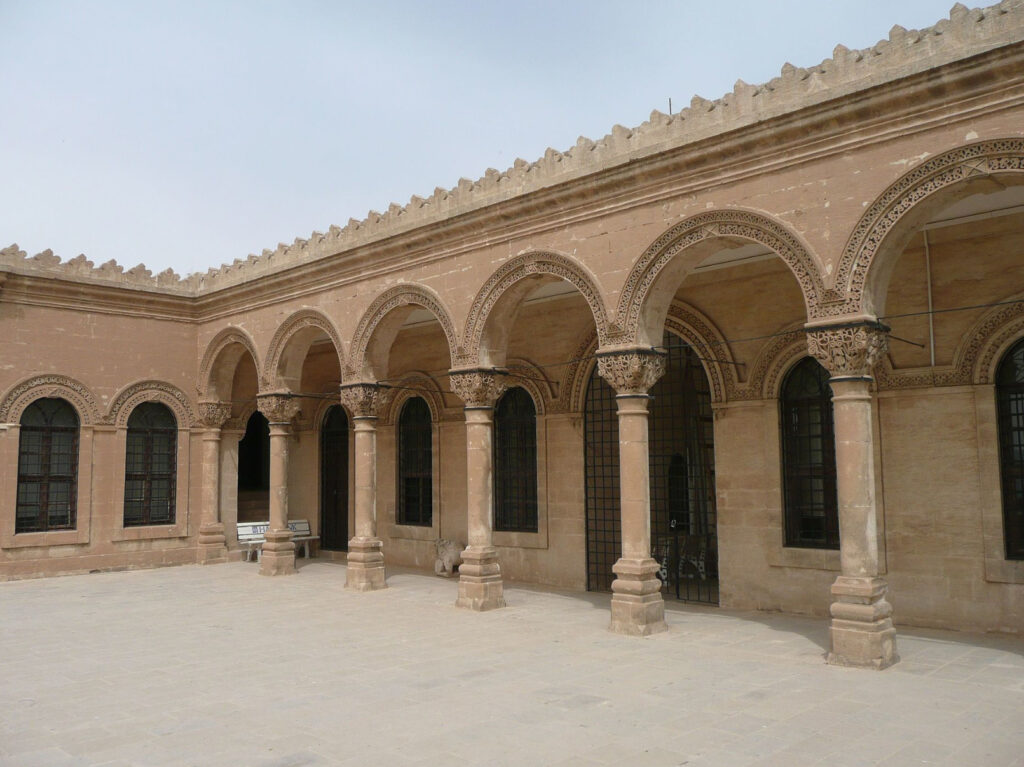
7. Kirklar Kilisesi (Church of the Forty Martyrs)
• A Syriac Orthodox church dating back to the 4th century, this church is one of the most significant in Mardin. It is still in use today by the local Christian community and features unique architecture with ancient motifs.
8. Mor Gabriel Monastery
• Located in the nearby town of Midyat, Mor Gabriel is one of the oldest functioning Christian monasteries in the world, founded in 397 AD. It’s a central site for the Syriac Orthodox Church and is known for its well-preserved architecture.
9. Sabanci City Museum
• Located in a historic army barracks, this museum offers a glimpse into Mardin’s history, covering local traditions, religious diversity, and architectural heritage. It provides a good introduction for those new to the city’s complex history.
11. Sakıp Sabancı Mardin City Museum and Art Gallery
• Situated in a historic mansion, this museum offers rotating exhibitions of Turkish and international contemporary art, alongside permanent displays about Mardin’s social history.
12. Ancient Mardin Houses
• The old city’s traditional stone houses are attractions in themselves, with their unique facades, decorative balconies, and elaborately carved doorways. These houses reflect Mardin’s architectural heritage and blend harmoniously with the natural landscape.
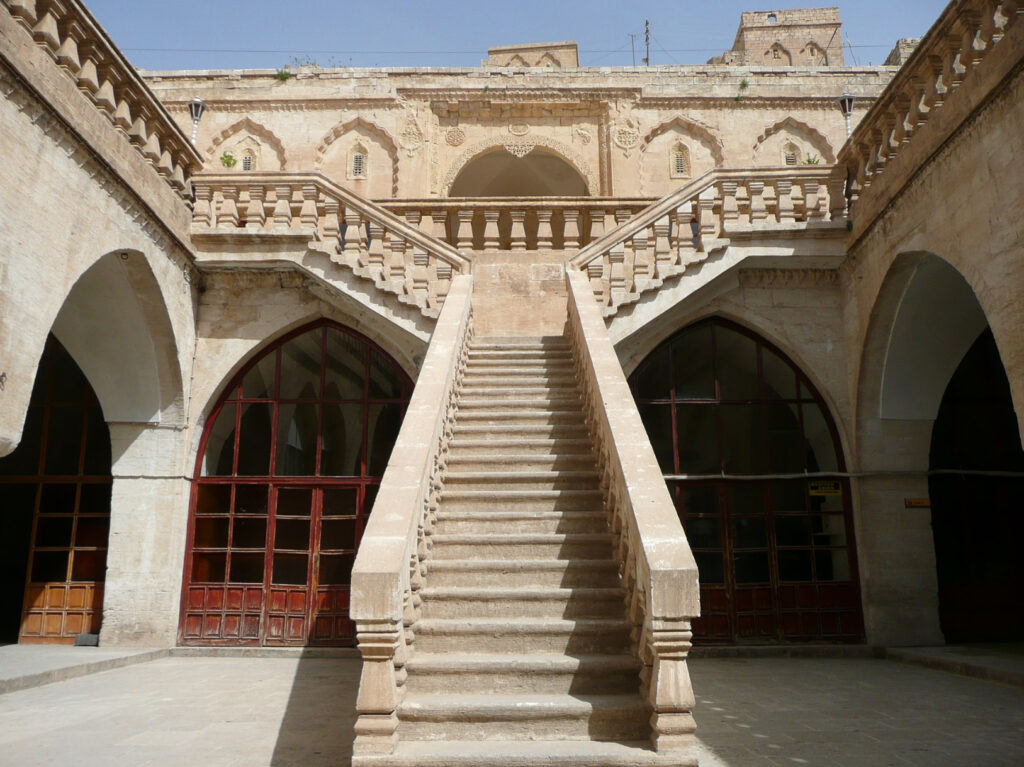
13. Midyat Old Town
• While not in Mardin itself, the nearby town of Midyat is famous for its beautiful sandstone buildings, ancient churches, and traditional silver and filigree workshops. Midyat is also a popular filming location due to its well-preserved heritage.
14. Latifiye Mosque
• Built in the 14th century, this mosque stands out with its decorative minaret and beautifully carved portal. It is a testament to Mardin’s architectural diversity.
15. Bazaar and Historic Markets
• The bazaars of Mardin, such as the Tellallar Çarşısı, are vibrant places to experience local culture, offering traditional crafts, spices, textiles, and silverware. Walking through the bustling markets allows visitors to immerse themselves in the city’s traditions.
16. Mesopotamian Plain Viewpoints
• Mardin offers several viewpoints from which visitors can enjoy breathtaking views over the vast Mesopotamian plains. These spots are especially popular at sunrise and sunset, creating a surreal landscape that emphasizes the city’s ancient connections to the cradle of civilization.
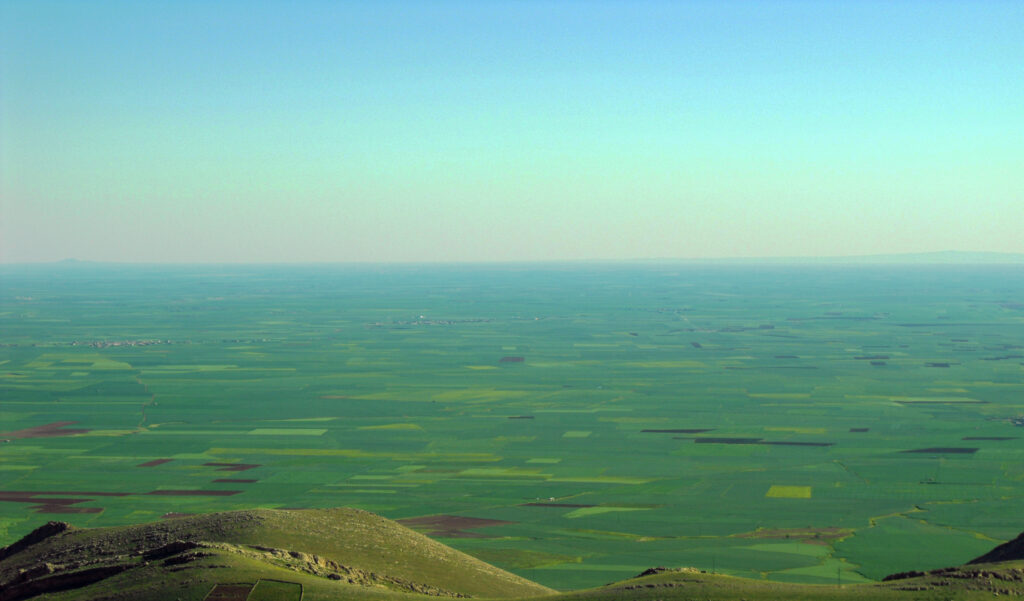
These attractions offer a window into Mardin’s multicultural past and its architectural grandeur, making it a fascinating destination for history enthusiasts and travelers interested in Turkey’s diverse heritage.
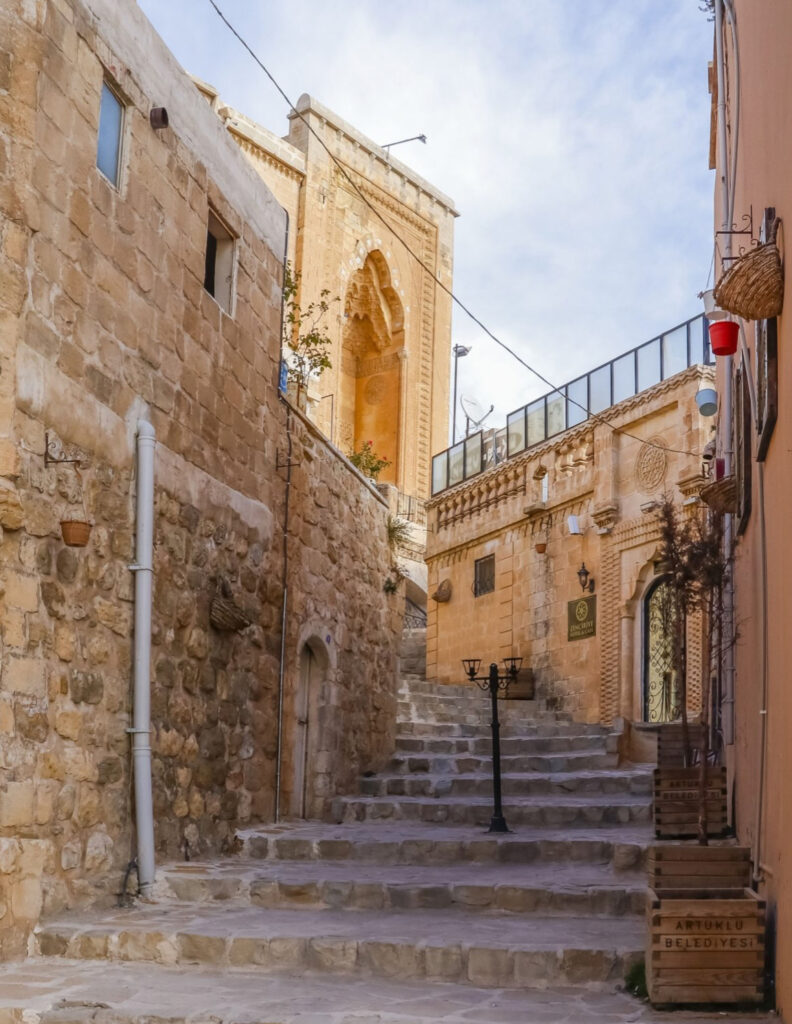
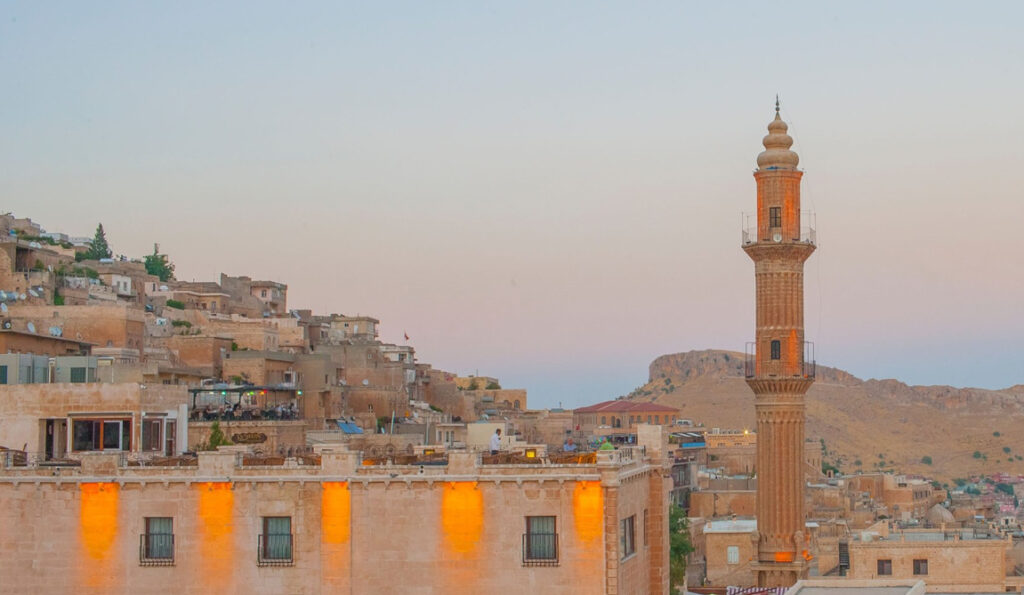
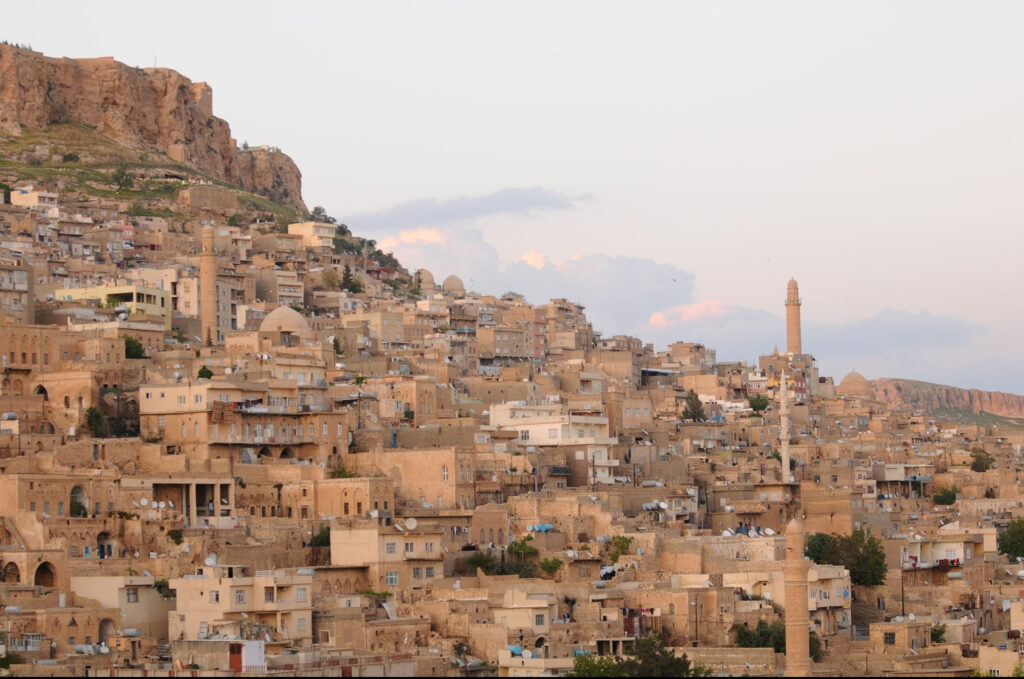
Here’s a one-day itinerary for exploring Mardin, highlighting its rich history, architecture, and unique local flavors.
Morning
1. Breakfast at a Traditional Café (9:00 AM)
• Start your day with a hearty Mardin breakfast at a local café, where you can try specialties like kibbeh (meat-filled bulgur balls), menemen (Turkish-style scrambled eggs with vegetables), simit (sesame-covered bread rings), and an assortment of cheeses, olives, and honey.
2. Explore the Mardin Museum (10:00 AM)
• Begin your sightseeing with a visit to the Mardin Museum. Located in a restored 19th-century building, the museum offers insights into Mardin’s ancient past and its multicultural heritage, displaying artifacts from various civilizations.
3. Zinciriye Medrese (Sultan Isa Medrese) (11:00 AM)
• Walk to the Zinciriye Medrese, a 14th-century madrasa showcasing beautiful courtyards, domes, and intricate stonework. It offers spectacular views of the city and the Mesopotamian plains from its terraces, making it a peaceful and scenic stop.
Midday
4. Visit the Great Mosque (Ulu Cami) (12:00 PM)
• Continue to the Great Mosque of Mardin (Ulu Cami), the city’s oldest mosque, with a stunning single minaret and remarkable architecture dating back to the 12th century. This mosque is a prime example of Artuqid architecture.
5. Lunch with Local Delicacies (1:00 PM)
• Head to a traditional restaurant in the old town to sample Mardin’s unique flavors. Try kaburga dolması (stuffed lamb ribs), a local specialty, or içli köfte (stuffed bulgur balls with meat). Don’t miss the cevizli sucuk (walnut sausage), a local dessert with walnuts wrapped in grape must—a delicious way to end your meal.
Afternoon
6. Explore Mardin’s Historic Bazaars (2:30 PM)
• Stroll through the bazaars, like the Tellallar Çarşısı, to experience local craftsmanship. Here, you can find Mardin’s famed silver filigree jewelry, handwoven textiles, and spices. It’s a great place to immerse yourself in the city’s vibrant atmosphere and pick up unique souvenirs.
7. Deyrulzafaran Monastery (4:00 PM)
• Take a short trip outside the city to visit the Deyrulzafaran Monastery. This 5th-century Syriac Orthodox monastery is a spiritual site with a serene atmosphere. Explore its ancient chapel, monk cells, and a sun-worship room, while learning about its role in the region’s religious history.
Evening
8. Sunset at the Mesopotamian Plain Viewpoint (6:00 PM)
• Head back to the city to catch the sunset from one of Mardin’s scenic viewpoints overlooking the Mesopotamian plains. This is one of the most breathtaking views in the region and is perfect for capturing the city’s golden sandstone glow against the vast plains.
9. Dinner at a Traditional Mardin Restaurant (7:00 PM)
• For dinner, enjoy soğan kebabı (kebab with onions) or keşkek (a traditional wheat and meat stew). Mardin’s cuisine often incorporates aromatic spices and ingredients like bulgur, lamb, and pomegranate molasses, reflecting its cultural diversity.
10. End with a Cup of Mırra (8:30 PM)
• Conclude your day with mırra, Mardin’s distinctive bitter coffee, often served in small cups without handles. This strong brew is an essential part of the local dining experience and a fitting way to end your exploration of Mardin.
This itinerary offers a blend of historical exploration, breathtaking scenery, and unique culinary experiences, providing a well-rounded introduction to Mardin in just one day.
